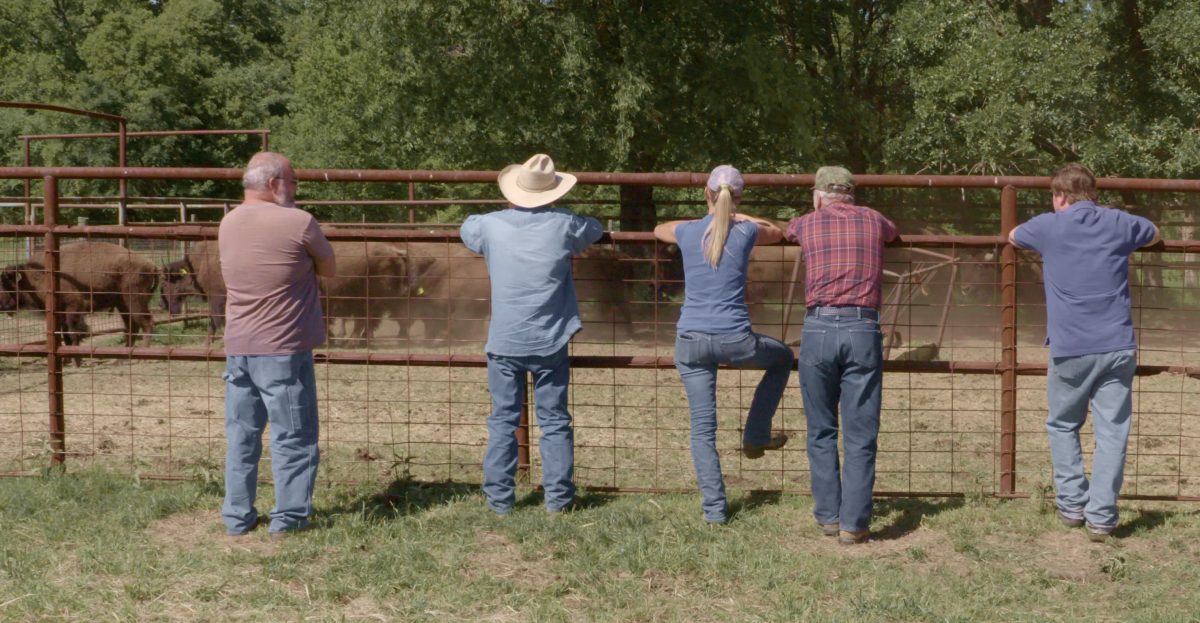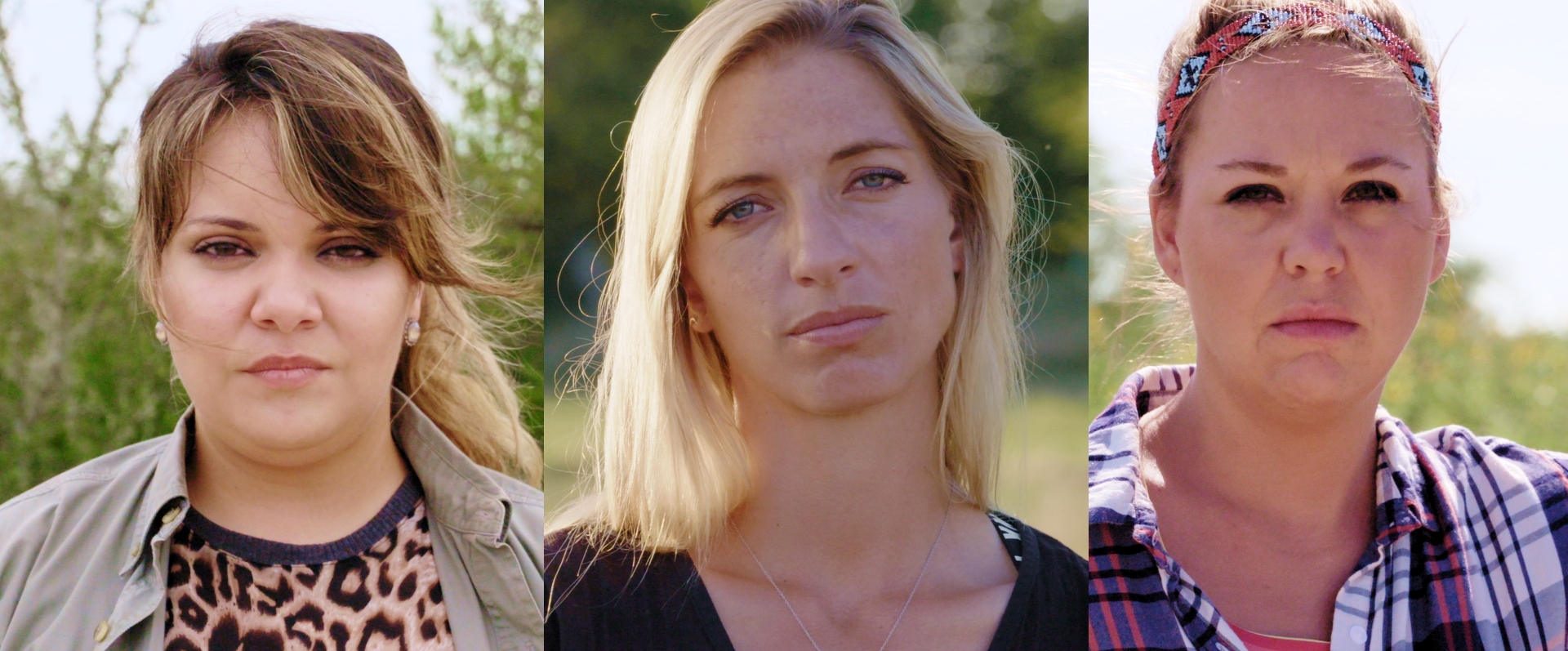
Mandy Dauses, one of the subjects of “Good Ol Girls,” at Rush Creek Ranch.
Many people told director Sarah Brennan Kolb that her documentary-Western, Good Ol Girl, wasn’t actually a Western. “There are no gunfights, there are no cowboys in it, where do you come off calling this a Western?” Kolb recalls hearing. While that may be true, there are cowgirls in it, and it’s about Texas, the ranching industry, and generational land ownership: all things that are indicative of and central to the story of the American West. “My Western might look a little different than yours, but that’s because it’s my experience,” Kolb retorts.
Good Ol Girl follows the stories of three modern cowgirls: Sarah Lemoine Knox, Mandy Dauses, and Martha Santos. Knox is a lawyer in Coleman who struggles with one day taking over her family’s ranch; Dauses is the general manager of a cow-calf operation in Forestburg who dreams of becoming a mother; and Santos is a young college graduate who has a difficult time finding entry-level work while her family’s Laredo land shrinks because of urbanization. Although the three are based in different parts of Texas, they ultimately find common ground in their experiences as women in a male-dominated industry.
“I was hearing of all these women who had these amazing stories that no one had ever really bothered to ask them about,” Kolb says. “I saw this opportunity to not only follow their stories, but bring a light to them.”
Kolb, who moved back to her native Texas after a stint in New York City, now works with Dauses on Rush Creek Ranch. She’s gone from capturing cowgirl life to immersing herself in it.
“It’s such a challenge, but it’s so rewarding,” Kolb says. “I love it.”
We spoke with Kolb about the process of making this documentary, learning the ins and outs of ranching, and what she hopes viewers will take away from her movie.

The subjects of “Good Ol Girl. From left: Martha Santos, Mandy Dauses, Sarah Lemoine Knox.
What attracted you to the agricultural/ranch lifestyle?
I moved around a lot when I was a kid. It was hard because it felt kind of volatile and unstable, but it was this blessing because I saw so much of Texas. I love the backroads of Texas, and I think growing up that was what was consistent for me. The town, the people, and the school all changed, but that tie and respect for the land was always constant. Being a Texan and caring about the land and respecting the people who could manage and control the land was always such a romantic idea to me. But getting into agriculture is really hard. It has so much to do with your family and so much to do with the generation before you, so I think it can be really challenging and daunting for those of us who don’t come from it.
How did you find the three subjects of your film?
I started talking to lots of women, because everyone always knows one cattle woman. [Laughs] Finally, a woman outside of Cuero was like, “You really just need to talk to the Texas Southwestern Cattle Raisers Association.” They’re kind of like the overarching, supportive body that helps facilitate the ranching industry. They have a really big conference every April in Fort Worth. Everyone I was talking to was like, “No, I don’t want to be in your documentary, but you should go to this conference, learn more, get more educated, and see if you learn anything or meet anyone.” So I did. I flew in. I didn’t know a single person. My name tag said “Sarah from Brooklyn,” so I stood out like a sore thumb.
I went to a panel discussion about generational transition. There was a woman there—she was the only person under 50 on the panel. She was so eloquent, and she had so much to say, and she seemed so honest. We both also happened to be wearing the exact same cowboy boots. That was Sarah Lemoine Knox. I went up and introduced myself to her. She’s really the person who saw from the very beginning what I wanted to do and what I wanted to say. She was a huge advocate for me and for the film, and introduced me to a bunch of women who I talked with and spent a lot of time with. From there, Martha and Mandy really emerged as the two other people who I wanted to follow.
What was the most unexpected thing you learned through this process?
I will say, funnily, the easiest part was the parallel between what I was going through trying to work my way up in the film production world and what the “good ol’ girls” were trying to do in their own world. I think that was a huge bonding experience for us and one that I’m really grateful for.
What was it like getting Abigail Disney on board as one of the executive producers?
Austin Film Society was the very first organization that gave us a grant, which was a huge catalyst. We struggled for a really long time because I was a first-time filmmaker and also doing this weird hybrid genre thing that no one quite understood. We applied to Fork Films, Abigail Disney’s grant foundation, and they gave us support and backing. Without her and her beliefs and what she practices, I don’t think we would have been able to make this movie.
What do you hope viewers will talk about after watching this movie?
I think the first thing I want people to know, especially women, is that it doesn’t matter what industry you’re in—even if it’s traditionally male dominated—you’re not alone. I think so many women in different industries can feel like they’re alone or isolated because they don’t see other people like them doing what they do. There are other women out there and there are a lot more women coming. I think, overall, we’re going through a huge generational period of transition environmentally, politically, and gender-wise. I think that’s really scary for a lot of people. I hope people can watch this and know that change is inevitable, but it doesn’t have to be a bad thing. We can love where we’re from, we can honor our traditions and our past, but also be honest and talk about the things that need to change. And make those changes while still remembering where we come from.








